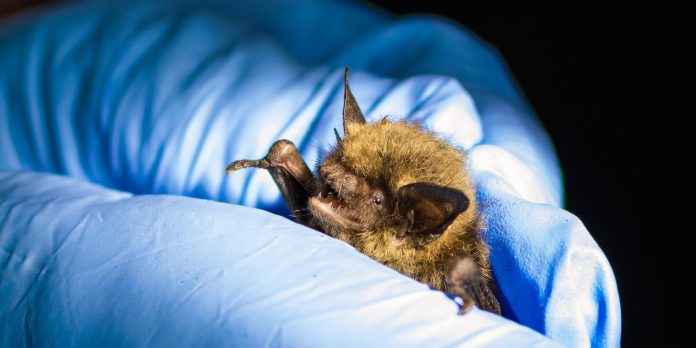HUNTSVILLE — There wasn’t a bat signal, but Dr. William Stone made an interesting discovery during the annual Alabama Bat Blitz.
Stone, a bat researcher at Alabama A&M University, captured the first Eastern small-footed bat recorded in Alabama.
The Alabama Bat Blitz is an intensive annual survey that brings together bat biologists from across the country. For the past 25 years, the survey has provided critical data on the distribution and status of Alabama’s microbats amidst challenges from disease and habitat loss.

This year’s blitz was May 7-10 at Cathedral Caverns in Scottsboro. Participants included members of the Alabama Bat Working Group, Southeastern Bat Diversity Network, state and federal agencies, universities, and private environmental consulting firms.
Three nights of netting by 10 teams were conducted in northeast Alabama and the week ended with a cave survey of Cathedral Caverns where a solitary Indiana bat was flying and then photographed on the cave ceiling.
“We finally caught a species assumed to be in the state but never actually captured during decades of surveys,” said Stone, a certified wildlife biologist and associate professor of Wildlife Ecology in the Forestry Ecology & Wildlife Program at AAMU. “In a time when many of our bat species are threatened by white-nose syndrome and habitat loss, it’s nice to add a new species to our state’s list.”

Before this discovery, the bat was known in neighboring Tennessee and Georgia, but it had never been captured in Alabama, even during migration. The Eastern small-footed bat ranges from southern Ontario and Quebec in Canada to the mountainous eastern United States, from New England to northern Georgia.
“(It) had managed to elude bat biologists, including myself, for decades until I captured the first specimen on May 7,” said Stone. “I caught a solitary male in a mist net along the talus slopes in Cathedral Caverns State Park.
“Unfortunately, the 5-gram specimen was too light to radio tag with a conventional transmitter to follow it to additional roosting sites.”
Bat biologists at the Blitz also captured endangered Gray bats and a Northern long-eared bat during the survey. AAMU graduate student Karman Morgan joined Stone this year, highlighting the importance of student involvement in these surveys.

“The surveys allow us to capture, count, measure, and identify bats,” said Stone. “Sometimes we radio-tag them and follow them to their roost sites or caves. We are protecting endangered species and preventing extinctions of an important group of species that eat agricultural insect pests and mosquitos.”
Alabama now has 16 confirmed bat species, including the new discovery. Three cave-dwelling species are threatened or endangered, while others are of highest conservation concern. Habitat conservation measures for the Eastern small-footed bat and other high-priority species will be implemented across northern Alabama with the aid of state and federally protected lands like Cathedral Caverns.

“For the university, this raises our stature as a land-grant institution with scientists making contributions in the forestry, ecology, and wildlife scientific disciplines,” said Stone. “The U.S. Fish & Wildlife Service is currently expanding their relationship with us to acquire more students and alumni as employees, and this discovery underscores what we can do on The Hill.”
Stone, who has been teaching wildlife courses at AAMU for 26 years, holds a B.S. in Forest Resources & Conservation from the University of Florida, an M.S. in Fisheries & Wildlife Management from Utah State University, and a Ph.D. in Wildlife Ecology from Utah State University. His research interests include small mammals, bats, wild hogs, birds, and occasionally amphibians, reptiles, and fish.

“I have always been intrigued by the ecology of small mammals, and bats are a unique group of these animals that are also insect predators,” said Stone. “Bats control insect pests that would otherwise damage millions of dollars of crops annually and help control disease vectors like mosquitos. They also pollinate tree blossoms and other plant flowers.”
Stone emphasized the significance of this discovery for diversifying the field of wildlife ecology and conservation.
“Wildlife belongs to all U.S. and Alabama citizens, but most professionals in wildlife are white males,” he said. “Opportunities for our diverse student body to work in wildlife and land-managing agencies and industries diversify the workforce, making those agencies and companies more representative of the clientele they serve and increasing their relevancy to the public at large.
“For our students, outdoor careers in natural resources with federal and state governments are attractive and well-paid jobs.”
Don’t miss out! Subscribe to our email newsletter to have all our smart stories delivered to your inbox.



